 | TODAY IN SCIENCE HISTORY NEWSLETTER - 27 JULY |
| Feature for Today |
| |
| Book of the Day | |
| | |
| Quotations for Today | |
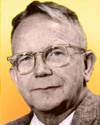 | "No one who saw it could forget it, a foul and awesome display." Recounting his memories of the first atom bomb test on 16 Jul 1945. |
| | "Perfect concordance among reformers is not to be expected; and men who are honestly struggling towards the light cannot hope to attain at one bound to the complete truth. There is always a danger lest the fascination of a new discovery should lead us too far. Men of science, being human, are apt, like lovers, to exaggerate the perfections and be a little blind to the faults of the object of their choice." |
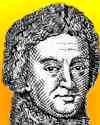 | "However dangerous might be the shock of a comet, it might be so slight, that it would only do damage at the part of the Earth where it actually struck; perhaps even we might cry quits if while one kingdom were devastated, the rest of the Earth were to enjoy the rarities which a body which came from so far might bring it. Perhaps we should be very surprised to find that the debris of these masses that we despised were formed of gold and diamonds; but who would be the most astonished, we, or the comet-dwellers, who would be cast on our Earth? What strange being each would find the other!." |
| QUIZ | |
| Before you look at today's web page, see if you can answer some of these questions about the events that happened on this day. Some of the names are very familiar. Others will likely stump you. Tickle your curiosity with these questions, then check your answers on today's web page. | |
| Births | |
| |  Hans Fischer was a German biochemist, born 27 Jul 1881, who was awarded the Nobel Prize for Chemistry in 1930 for research into the red blood pigment, and chlorophyll, the green pigment in plants. He further showed that they share a similar structure, but with subtle differences. Hans Fischer was a German biochemist, born 27 Jul 1881, who was awarded the Nobel Prize for Chemistry in 1930 for research into the red blood pigment, and chlorophyll, the green pigment in plants. He further showed that they share a similar structure, but with subtle differences. What is the red blood pigment? What is the red blood pigment? |
 |  Bertram Borden Boltwood, born 27 Jul 1870, was an American chemist and physicist whose work on the radioactive decay of uranium and thorium was important in the development of the theory of isotopes. Boltwood studied the "radioactive series" whereby radioactive elements sequentially decay into other isotopes or elements. Bertram Borden Boltwood, born 27 Jul 1870, was an American chemist and physicist whose work on the radioactive decay of uranium and thorium was important in the development of the theory of isotopes. Boltwood studied the "radioactive series" whereby radioactive elements sequentially decay into other isotopes or elements. What was the stable end product of these decay series? What was the stable end product of these decay series? |
| Deaths | |
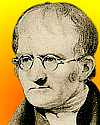 |  An English meteorologist (1766-1844) switched to chemistry when he saw the applications for chemistry of his ideas about the atmosphere. He proposed the Atomic Theory in 1803 in which he inferred proportions of elements in compounds by taking ratios of the weights of reactants. He set the atomic weight of hydrogen to be identically equal to one and developed the table of atomic weights for the other elements. Hence he is known as one of the fathers of modern physical science. An English meteorologist (1766-1844) switched to chemistry when he saw the applications for chemistry of his ideas about the atmosphere. He proposed the Atomic Theory in 1803 in which he inferred proportions of elements in compounds by taking ratios of the weights of reactants. He set the atomic weight of hydrogen to be identically equal to one and developed the table of atomic weights for the other elements. Hence he is known as one of the fathers of modern physical science. Can you name this man? Can you name this man? |
| Events | |
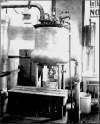 |  On 27 Jul In 1921, Canadians Sir Frederick Banting and Charles Best succeeded in the isolation of the anti-diabetic component of the pancreas. On 27 Jul In 1921, Canadians Sir Frederick Banting and Charles Best succeeded in the isolation of the anti-diabetic component of the pancreas. What was the substance they isolated? What was the substance they isolated? |
| |  On 27 Jul of a certain year, the first electric automobile, designed by Philip W. Pratt, was demonstrated in Boston, a tricycle powered by six Electrical Accumulator Company cells, weighing 90 pounds. On 27 Jul of a certain year, the first electric automobile, designed by Philip W. Pratt, was demonstrated in Boston, a tricycle powered by six Electrical Accumulator Company cells, weighing 90 pounds. In what decade was this first electric automobile displayed? In what decade was this first electric automobile displayed? |
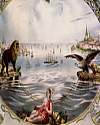 |  On 27 Jul 1866, Cyrus W. Field finally succeeded, after two failures, in laying the first underwater telegraph cable. It was 1,686 miles long, and laid by the Great Eastern, the largest ship then afloat. On 27 Jul 1866, Cyrus W. Field finally succeeded, after two failures, in laying the first underwater telegraph cable. It was 1,686 miles long, and laid by the Great Eastern, the largest ship then afloat. Where was this first cable laid? Where was this first cable laid? |
| Answers |
When you have your answers ready to all the questions above, you'll find all the information to check them, and more, on the July 27 web page of Today in Science History. Or, try this link first for just the brief answers. Fast answers for the previous newsletter for July 26: the study of the three-dimensional arrangements of atoms within molecules; army ants; neon, krypton and xenon, and co-discovered argon, radon; English; at the base of the brain; twin-cylinder. |
| Feedback |
 If you enjoy this newsletter, the website, or wish to offer encouragement or ideas, please send feedback by using your mail reader Reply button. If you enjoy this newsletter, the website, or wish to offer encouragement or ideas, please send feedback by using your mail reader Reply button. |
--
If you do not want to receive any more newsletters, this link
To update your preferences and to unsubscribe visit this link
If you do not want to receive any more newsletters, this link
To update your preferences and to unsubscribe visit this link
! !


Δεν υπάρχουν σχόλια:
Δημοσίευση σχολίου